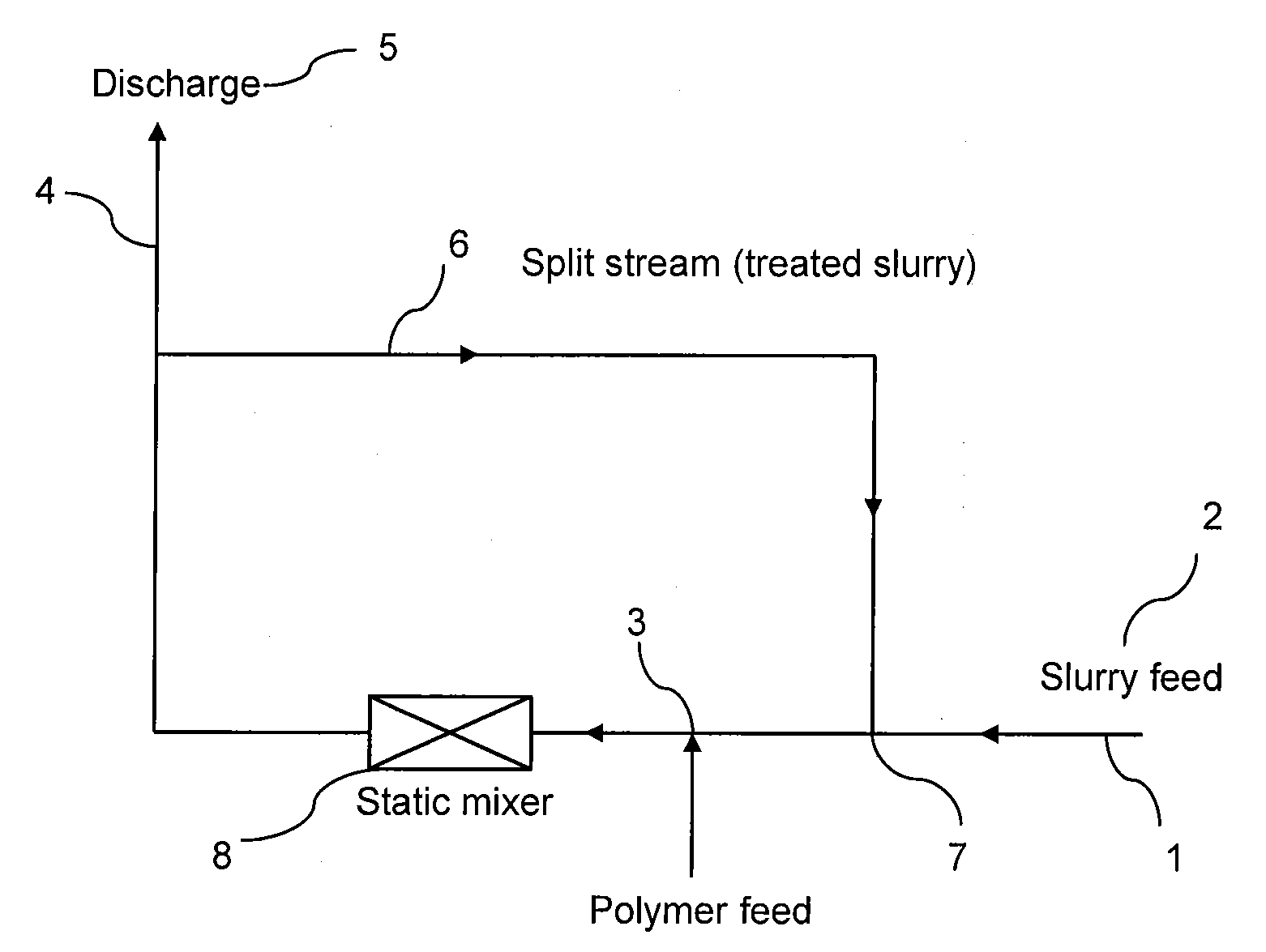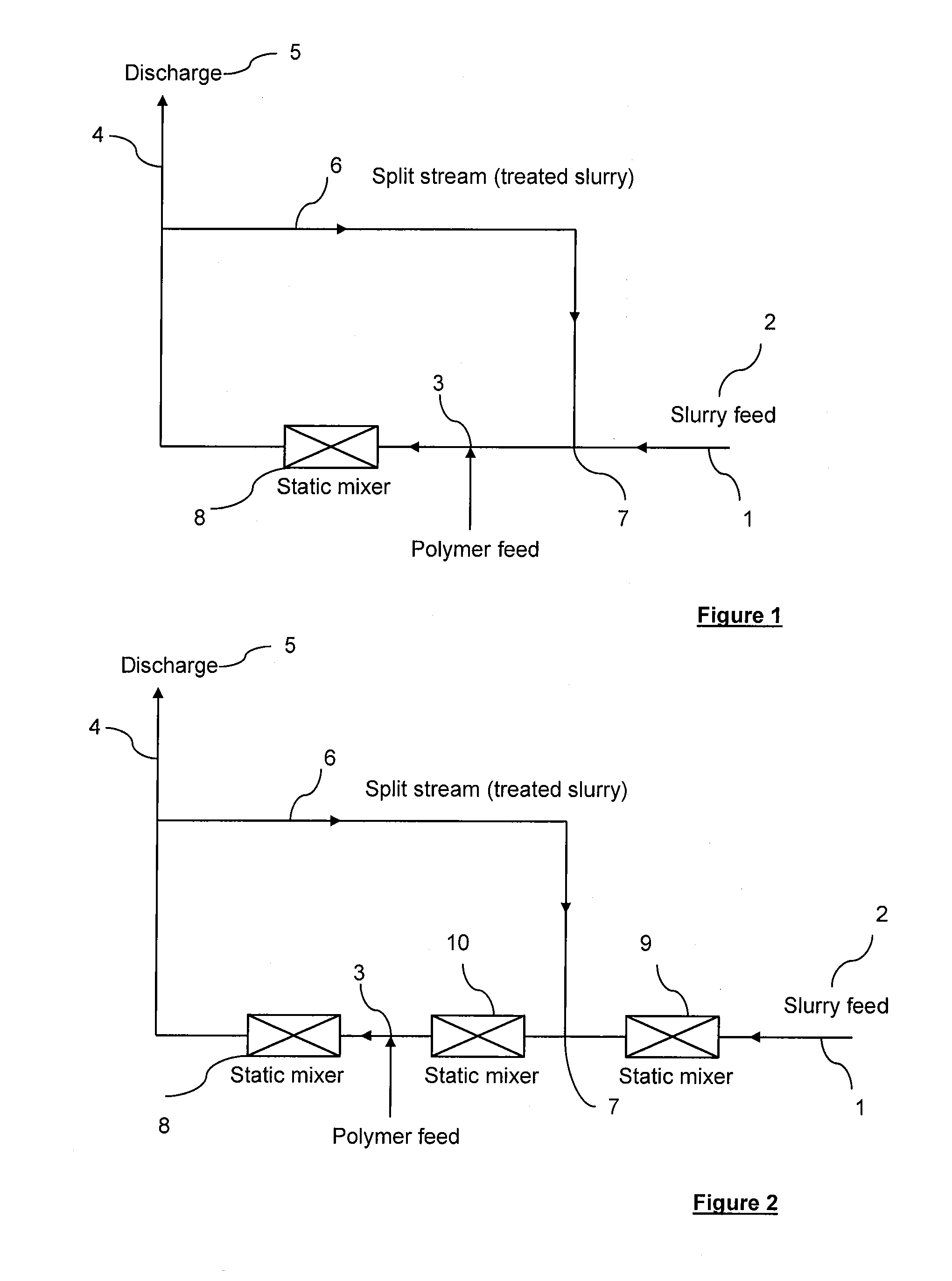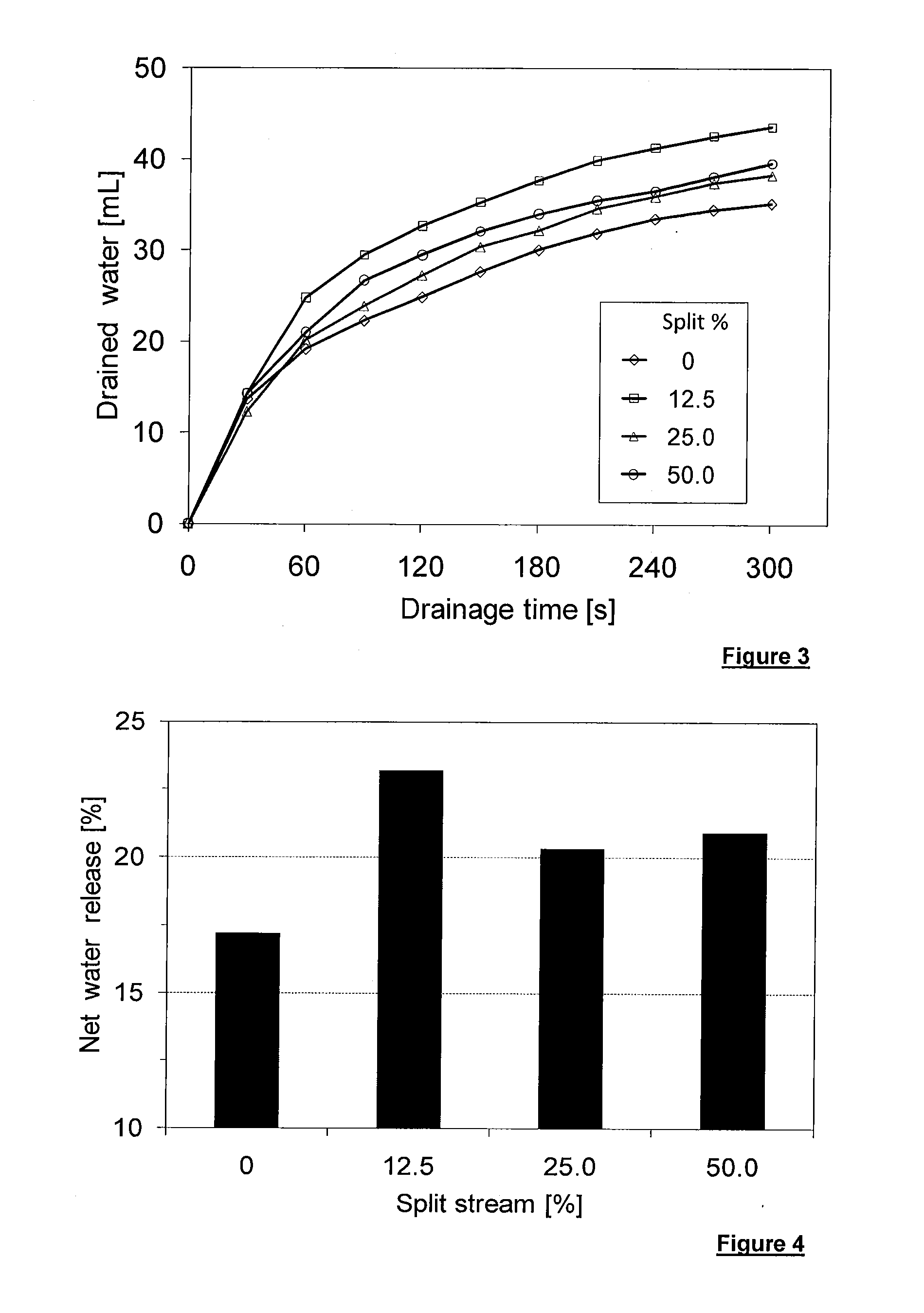Process for improving inline tailings treatment
a technology for tailings and treatment, applied in separation processes, transportation and packaging, chemistry apparatuses, etc., can solve the problems of becoming contaminated with tailings and other waste materials, and achieve the effect of improving treatment efficiency and improving performan
- Summary
- Abstract
- Description
- Claims
- Application Information
AI Technical Summary
Benefits of technology
Problems solved by technology
Method used
Image
Examples
example 1
Split Stream Process Model 1
[0052]FIG. 1 is a scheme illustrating a first embodiment of the installation of the invention. Accordingly, the installation comprises a main stream (1) within which circulates an in-line flow of slurries (2). The main stream contains a polymer injection point (3) through which at least one polymer is injected. The main stream is then divided into two streams respectively:[0053]a discharge stream (4) which directly transfers a part of treated slurries to the deposit area (5),[0054]a split stream (6) which reintroduces the other part of treated slurries into the main stream (1) through the reinjection point (7) prior to the polymer injection point (3). As shown on the scheme, the installation is also equipped with a static mixer (8).
example 2
Split Stream Process Model 2
[0055]FIG. 2 is a scheme illustrating a second embodiment of the installation of the invention. This installation differs from the first one in that it contains two additional static mixers. The second static mixer (9) is located before the reinjection point (7) and the third one is located between the reinjection point (7) and the injection point (3).
examples 3
Effect of Split Stream on Mature Fine Tailings Dewatering
Test Procedure
[0056]200 g of oil sands mature fine tailings of 48.9% solids was mixed with the desired volume of 0.2 wt % solution of A-3338. After mixing, a known percentage of slurry was collected (subsampled) and additional untreated MFT and polymer solution were added into it. More mixing was applied to achieve the optimal flocculation. The additional untreated MFT and polymer were added in amounts so that a total MFT used was 200 g and final polymer dosage was unchanged for all tests. Because the final amount of treated MFT was the same with the initial MFT (200 g), the percentage of collected slurry was defined as a percentage of split stream.
[0057]After flocculation, a gravity drainage test was performed and net water release was also determined at 90 minutes.
Results
[0058]As shown in FIG. 3, split stream increased significantly drainage rate. The highest drainage rate was obtained for 12.5% of split stream.
[0059]As show...
PUM
| Property | Measurement | Unit |
|---|---|---|
| Fraction | aaaaa | aaaaa |
| Fraction | aaaaa | aaaaa |
| Fraction | aaaaa | aaaaa |
Abstract
Description
Claims
Application Information
 Login to View More
Login to View More - R&D
- Intellectual Property
- Life Sciences
- Materials
- Tech Scout
- Unparalleled Data Quality
- Higher Quality Content
- 60% Fewer Hallucinations
Browse by: Latest US Patents, China's latest patents, Technical Efficacy Thesaurus, Application Domain, Technology Topic, Popular Technical Reports.
© 2025 PatSnap. All rights reserved.Legal|Privacy policy|Modern Slavery Act Transparency Statement|Sitemap|About US| Contact US: help@patsnap.com



